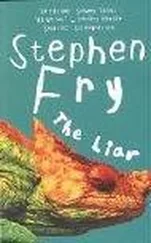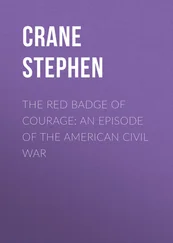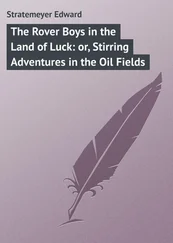Stephen Fry - The Ode Less Travelled - Unlocking The Poet Within
Здесь есть возможность читать онлайн «Stephen Fry - The Ode Less Travelled - Unlocking The Poet Within» весь текст электронной книги совершенно бесплатно (целиком полную версию без сокращений). В некоторых случаях можно слушать аудио, скачать через торрент в формате fb2 и присутствует краткое содержание. Жанр: Старинная литература, на английском языке. Описание произведения, (предисловие) а так же отзывы посетителей доступны на портале библиотеки ЛибКат.
- Название:The Ode Less Travelled: Unlocking The Poet Within
- Автор:
- Жанр:
- Год:неизвестен
- ISBN:нет данных
- Рейтинг книги:3 / 5. Голосов: 1
-
Избранное:Добавить в избранное
- Отзывы:
-
Ваша оценка:
- 60
- 1
- 2
- 3
- 4
- 5
The Ode Less Travelled: Unlocking The Poet Within: краткое содержание, описание и аннотация
Предлагаем к чтению аннотацию, описание, краткое содержание или предисловие (зависит от того, что написал сам автор книги «The Ode Less Travelled: Unlocking The Poet Within»). Если вы не нашли необходимую информацию о книге — напишите в комментариях, мы постараемся отыскать её.
The Ode Less Travelled: Unlocking The Poet Within — читать онлайн бесплатно полную книгу (весь текст) целиком
Ниже представлен текст книги, разбитый по страницам. Система сохранения места последней прочитанной страницы, позволяет с удобством читать онлайн бесплатно книгу «The Ode Less Travelled: Unlocking The Poet Within», без необходимости каждый раз заново искать на чём Вы остановились. Поставьте закладку, и сможете в любой момент перейти на страницу, на которой закончили чтение.
Интервал:
Закладка:
Note that ‘porcelain’ in true upper-class British would have to be pronounced ‘porslin’ to make the count work. Some kind of form is offered by the rhyming–one feels otherwise that the heavily run-on lines would be in danger of dissolving the work into prose. It was Daryush’s exact contemporary the American poet Marianne Moore (1887–1969) who fully developed the manner. Her style of scrupulous, visually arresting syllabic verse has been highly influential. Here is an extract from her poem ‘The Fish’ with its syllable count of 1,3,9,6,8 per stanza.
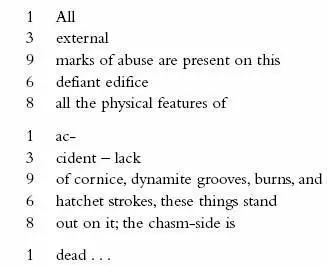
As you can see, the count is important enough to sever words in something much fiercer than a usual enjambment. The apparent randomness is held in check by delicate rhyming: this/edifice , and/stand .
‘I repudiate syllabic verse’ Moore herself sniffed to her editor and went further in interview:
I do not know what syllabic verse is, can find no appropriate application for it. To be more precise, to raise to the status of science a mere counting of syllables seems to me frivolous.
As Dr Peter Wilson of London Metropolitan University has pointed out, ‘…since it is clear that many of her finest poems could not have been written in the form they were without the counting of syllables, this comment is somewhat disingenuous.’ Other poets who have used syllabics include Dylan Thomas, Thom Gunn and Donald Justice, this from the latter’s ‘The Tourist from Syracuse’:You would not recognize me.Mine is the face which blooms inThe dank mirrors of washroomsAs you grope for the light switch.
Between the Daryush and the Moore I hope you can see that there are possibilities in this verse mode. There is form, there is shape. If you like the looser, almost prose-poem approach, then writing in syllabics allows you the best of both worlds: structure to help organise thoughts and feelings into verse, and freedom from what some poets regard as the jackboot march of metrical feet. The beauty of such structures is that they are self-imposed, they are not handed down by our poetic forebears. That is their beauty but also their terror. When writing syllabics you are on your own.
It must be time for another exercise.
Poetry Exercise 8
Two stanzas of alternating seven-and five-line syllabic verse: subject Rain .
Two stanzas of verse running 3, 6, 1, 4, 8, 4, 1, 6, 3: subject Hygiene .
Here are my attempts, vague rhymes in the first, some in the second: you don’t have to: Rain they say there’s a taste before it comes; a tin tanglike tonguing a batteryor a cola canI know that I can’t smell itbut the animalsglumly lowering their headscan foretell its fall:they can remember rains pastas I come closertheir eyewhites flash in fear ofanother Noah Hygiene I’m filthOn the outside I stink.But,There are peopleSo cleansed of dirt it makes you thinkUnhygienicThoughtsOf them. I’d much ratherStay filthy.Their latherCan’t reach where they reek,SudsCan’t soap inside.All hosed, scrubbed and oilily sleekThey’re still deep dyedTheyCan stand all day and drenchThey still stench.
We have come to the end of our chapter on metrical modes. It is by no means complete. If you were (heaven forbid) to go no further with my book, I believe you would already be a much stronger and more confident poet for having read thus far. But please don’t leave yet, there is much to discover in the next chapters on rhyming and on verse forms: that is where the fun really begins. Firstly, a final little exercise awaits.
Poetry Exercise 9
Coleridge wrote the following verse in 1806 to teach his son Derwent the most commonly used metrical feet. Note that he uses the classical ‘long’ ‘short’ appellation where we would now say ‘stressed’ ‘weak’. For your final exercise in this chapter, WHIP OUT YOUR PENCIL and see how in the first stanza he has suited the metre to the description by scanning each line. By all means refer to the ‘Table of Metric Feet’ below. You are not expected to have learned anything off by heart. I have included the second stanza, which does not contain variations of metre, simply because it is so touching in its fatherly affection.
Lesson for a Boy
Trochee trips from long to short;
From long to long in solemn sort
Slow Spondee stalks, strong foot!, yet ill able
Ever to come up with Dactyl's trisyllable.
Iambics march from short to long;–
With a leap and a bound the swift Anapaests throng;
One syllable long, with one short at each side,
Amphibrachys hastes with a stately stride;–
First and last being long, middle short, Amphimacer
Strikes his thundering hoofs like a proud high-bred Racer.
If Derwent be innocent, steady, and wise,
And delight in the things of earth, water, and skies;
Tender warmth at his heart, with these metres to show it,
With sound sense in his brains, may make Derwent a poet,
May crown him with fame, and must win him the love
Of his father on earth and his Father above.
My dear, dear child!
Could you stand upon Skiddaw, you would not from its whole ridge
See a man who so loves you as your fond S.T. Coleridge…
Table of Metric Feet
B INARY

T ERNARY

Q UATERNARY
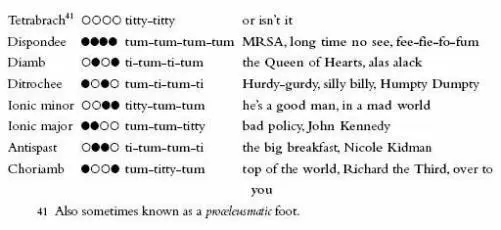
Q UATERNARY continued

Now about the metrics: the terminology you use–of amphibrachs, pyrrhics etc.–is obsolete in English. We now speak of these feet only in analyzing choruses from Greek plays–because Greek verse is quantitative […] we have simplified our metrics to five kinds of feet […] trochee, iambus, anapest, dactyl, spondee. We do not need any more.
Edmund Wilson in a letter to Vladimir Nabokov, 1 September 1942
CHAPTER TWO
Rhyme
It is the one chord we have added to the Greek lyre.
OSCAR WILDE: ‘The Critic as Artist’
I
Rhyme, a few general thoughts
‘Do you rhyme?’
This is often the first question a poet is asked. Despite the absence of rhyme in Greece and Rome (hence Wilde’s aphorism above), despite the glories of Shakespeare, Milton, Wordsworth, Tennyson and all the blank-verse masterpieces of English literature from the Dark Ages to the present day, despite a hundred years of Modernism, rhyming remains for many an almost defining feature of poetry. It ain’t worth a dime if it don’t got that rhyme is how some poets and poetry lovers would sum it up. For others rhyming is formulaic, commonplace and conventional: a feeble badge of predictability, symmetry and bourgeois obedience.
There are very few poets I can call to mind who only used rhyme in their work, but I cannot think of a single one, no matter how free form and experimental, who never rhymed. Walt Whitman, Ezra Pound, D. H. Lawrence, Wyndham Lewis, William Carlos Williams, T. S. Eliot, Marianne Moore, e e cummings, Crane, Corso, Ferlinghetti, Ginsberg, Hughes–not an exception do I know.
Читать дальшеИнтервал:
Закладка:
Похожие книги на «The Ode Less Travelled: Unlocking The Poet Within»
Представляем Вашему вниманию похожие книги на «The Ode Less Travelled: Unlocking The Poet Within» списком для выбора. Мы отобрали схожую по названию и смыслу литературу в надежде предоставить читателям больше вариантов отыскать новые, интересные, ещё непрочитанные произведения.
Обсуждение, отзывы о книге «The Ode Less Travelled: Unlocking The Poet Within» и просто собственные мнения читателей. Оставьте ваши комментарии, напишите, что Вы думаете о произведении, его смысле или главных героях. Укажите что конкретно понравилось, а что нет, и почему Вы так считаете.





